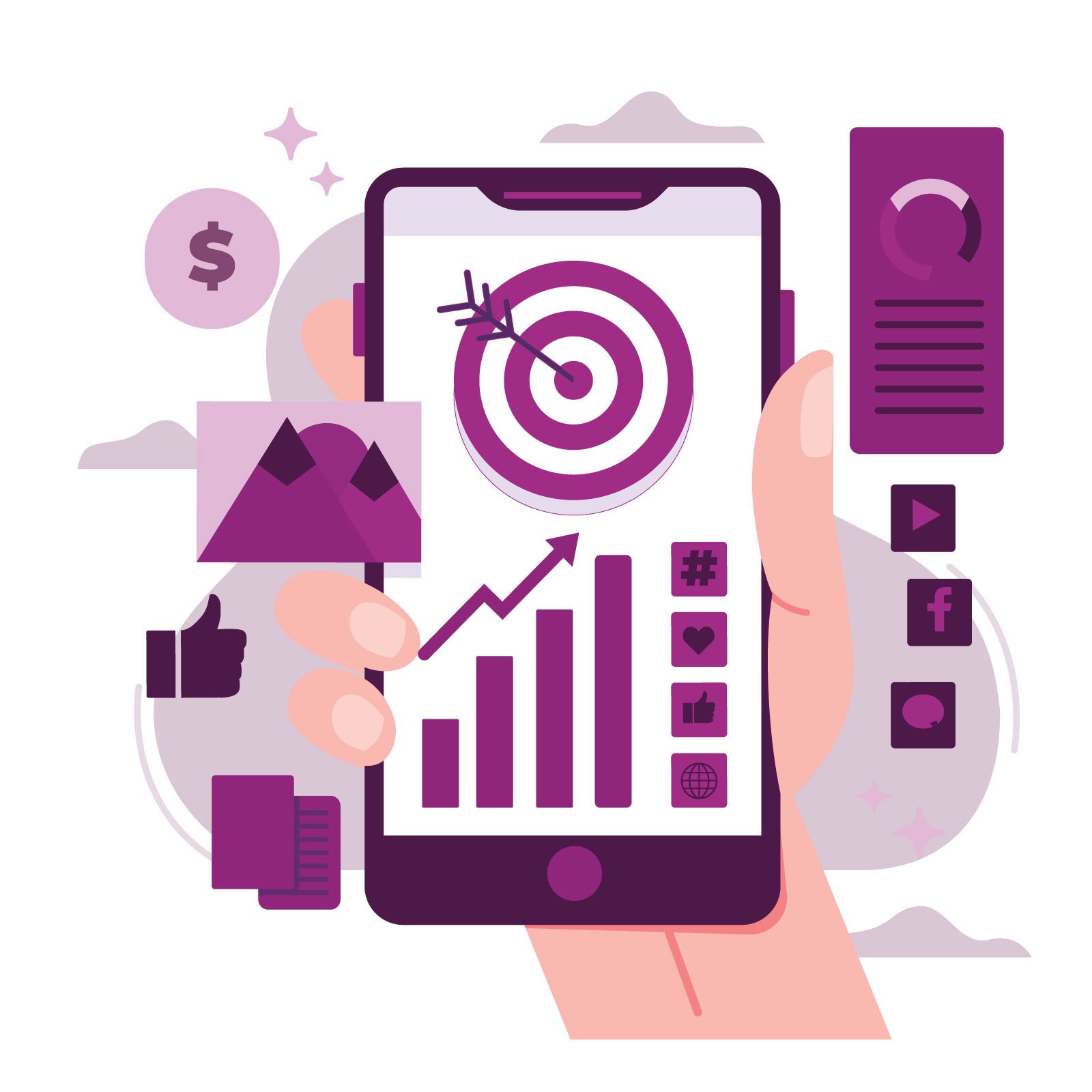Over 80% of consumers hit the search bar before purchasing a product or service. This has fueled a significant increase in businesses competing for user attention through search engine advertising. What’s the goal? To aim to capture that crucial first touchpoint and convert searchers into loyal customers.
However, the search game is constantly evolving. Google is notorious for its ever-changing algorithms that reshape the search landscape. Moreover, advertising costs are going over the roof.
Simply running search ads isn’t enough. Businesses need to become masters of measurement and optimization to ensure their campaigns are delivering the best possible results and maximising ROI.
While Google Ads offers a variety of campaign types, each with its strengths, they also use different metrics for success. To give you a clear picture, let’s explore some overall averages. Wordstream analysed over 17,000 campaigns running from April 2023 through March 2024 to create the latest version of the search advertising benchmarks report.
Microsoft and Google Ads Benchmarks in 2024
Let’s take a panoramic view of the latest benchmark data for Microsoft Ads and Google Ads in 2024. This data paints a fascinating picture of a dynamic landscape with both promising opportunities and emerging challenges.
- Click-Through Rate: The good news is that click-through rates are on the rise! Over 70% of industries experienced year-over-year growth in CTR, with an overall average increase of 5% compared to 2023. This suggests that ad creatives and targeting strategies are becoming more effective at capturing user attention.
- Cost Per Click: There’s a flip side to the CTR coin. Cost-per-click saw a significant rise across 86% of industries, with an average increase of 10%. Some sectors, like real estate and personal services, saw a sharp rise exceeding 25%. There’s a growing competition for ad space, and advertisers need to optimise campaigns for efficiency.
- Conversion Rate: Conversion rates present a mixed picture. Reports note an average 1% decrease across 12 out of 23 industries, but it is not a uniform distribution. Finance, insurance and dental services saw significant declines, possibly due to increased competition or changes in consumer behaviour within those sectors. But, there’s also a bright side! Industries like apparel/fashion & jewellery and career & employment experienced impressive year-over-year growth in conversion rates. This suggests that certain industries are adapting well to the evolving landscape and finding ways to convert clicks into customers.
- Cost per Lead: Cost per lead also followed an upward trajectory, increasing for 19 out of 23 industries with an average increase of 25%. This is slightly lower compared to the previous year’s 27% rise, but still reflects a continuous challenge for advertisers. Optimising campaigns for lead quality and using effective conversion tracking will be crucial in mitigating this cost pressure.
Before diving into specific metrics, let's explore the big picture:
The 2024 search advertising landscape demands a nuanced approach. While rising costs and conversion rate fluctuations present challenges, the overall CTR growth indicates an opportunity for effective campaigns.
The rising CTR indicates a more ad-dominated SERP, with ads potentially blending into organic results. Additionally, Google’s broad match type default might lead to clicks with lower purchase intent.
“The rise in CPC across most industries aligns with ongoing economic challenges like inflation,” says Alessandro Colarossi, Partner Data Transformation Lead at Google.
Search Ads Benchmarks For Every Industry
Click-Through Rate in Search Ads
Click-through rate is a crucial metric for measuring the effectiveness of your search ad campaigns. Often overshadowed by cost-centric metrics, CTR reveals a key aspect of your ad’s performance: how often users viewing your ad in the Search Engine Results Page (SERP) actually click on it. This click is a vital first step towards achieving conversions, making CTR a significant indicator of success.
The current industry benchmark for CTR in Google Ads sits at around 6.42%.
Industry CTR Leaders
This year, Arts & Entertainment (13.04%), Sports & Recreation (9.66%), and Real Estate (9.20%) boast the highest average click-through rates (CTR) in search ads. Meanwhile, Attorneys & Legal Services (5.30%), Home Improvement (5.59%), and Dentists (5.38%) have the lowest.
Shifting SERPs
The overall CTR increase across most industries reflects a more ad-dominant Search Engine Results Page (SERP). This has both benefits and drawbacks. As ads seamlessly blend with organic listings, clicks may rise, potentially impacting organic traffic for advertisers.
Year-over-Year CTR Changes: Winners & Losers
Looking at year-over-year (YoY) changes, Finance & Insurance (up 24.75%), Shopping (up 22.22%), and Home Improvement (up 16.46%) saw the biggest CTR gains. Conversely, Animals & Pets (down 8.99%), Sports & Recreation (down 8.26%), and Apparel & Jewelry (down 5.11%) experienced the steepest declines.
The 2024 average CTR of 6.42% marks a slight improvement over last year’s 6.11%.
Cost Behind the Click
Click-through rate is just one piece of the puzzle. To understand your ad performance fully, you need to consider cost per click. Several factors influence CPC, including your bidding strategy, CTR, and industry competitiveness.
The current industry benchmark for CPC in Google Ads (as of 2024) sits around $4.66.
Industry Trends in CPC
Arts & Entertainment ($1.72), Travel ($1.92), and Real Estate ($2.10) boast the lowest average cost per click (CPC) this year. Conversely, Attorneys & Legal Services ($8.94), Home Improvement ($6.96), and Dentists ($6.82) have the highest.
A Look Back At Rising Costs
Compared to last year, overall CPC has increased by 10%. This likely reflects ongoing inflation, where prices haven't necessarily come down despite slower inflation rates. While industries like legal services face higher CPCs, these clicks often translate to high-value conversions for them.
Year-over-Year CPC Changes: Winners & Losers
Real Estate (up 35.48%), Sports & Recreation (up 32.20%), and Personal Services (up 26.92%) saw the most significant CPC increases YoY. Conversely, Finance & Insurance (down 25.19%), Legal Services (down 2.93%), and Business Services (down 1.83%) experienced the biggest improvements.
The 2024 average CPC of $4.66 is 44 cents higher than the prior year’s $4.22.
Conversion Rate
For advertisers, conversion rate reigns supreme in PPC metrics. It measures the golden outcome — how many ad clicks translate into actual sales or leads.
Striking a balance between high conversion rates and lower costs can be a challenge. This highlights the importance of closely monitoring your conversion rate alongside other metrics within your Google Ads account.
The 2024 industry benchmark for conversion rate in Google Ads sits at 6.96%.
Industry Leaders
This year, the highest average conversion rates (CVRs) belong to Automotive Repair (12.96%), Animals & Pets (12.03%), and Physicians & Surgeons (11.08%). Conversely, Furniture (2.53%), Finance & Insurance (2.78%), and Real Estate (2.91%) have the lowest.
Blending Ads, Declining Conversions?
As ads seamlessly blend with organic results and occupy more SERP space, even for less commercially-driven searches, lower CVRs might become more common due to clicks from users not ready to convert. Savvy advertisers need to maximise their spend by focusing budgets on high-intent keywords to maintain strong conversion rates.
Year-over-Year Conversion Changes: Winners & Losers
Finance & Insurance (-32.40%), Dentists (-19.57%), and Legal Services (-19.46%) experienced the biggest CVR declines YoY. Conversely, Apparel & Jewelry (up 112%), Career & Employment (up 80.97%), and Restaurants & Food (up 72.16%) saw the most significant CVR increases.
Overall, the 2024 average CVR of 6.96% is marginally lower than last year’s 7.04%.
Cost per Lead
Also known as cost per conversion, cost per action, or cost per acquisition, cost per lead reveals the average cost your business incurs for a conversion generated by a search ad.
The 2024 industry benchmark for CPL in Google Ads sits at $66.69.
Industry Trends in CPL
The industries with the most affordable leads this year are Automotive Repair ($27.94), Restaurants & Food ($29.67), and Animals & Pets ($34.81). Conversely, Attorneys & Legal Services ($144.03), Furniture ($119.10), and Career & Employment ($117.92) face the highest CPLs.
Rising Costs
While Google’s pricing power is a concern, other factors like industry competition and account structure also significantly impact your CPL. Focusing on strategies like keyword targeting and ad optimization can help combat rising costs, even within a competitive landscape.
Year-over-Year CPL Changes: Winners & Losers
Arts & Entertainment (-41.73%), Finance & Insurance (-15.64%), and Restaurants & Food (-14.77%) saw the most significant CPL improvements YoY. In contrast, Physicians & Surgeons (up 58.42%), Sports & Recreation (up 56.82%), and Animals & Pets (up 47.69%) experienced the biggest CPL increases.
Overall, the 2024 average CPL of $66.69 reflects a $13.17 rise from last year’s $53.52.
What Do These Search Ad Benchmarks Mean For You?
Wondering how to leverage these search ad benchmarks?
Here’s a refined version of the section on what the benchmarks mean for your business and key takeaways to optimise your campaigns:
1. Embrace a Multi-Engine Approach
Don’t limit yourself to just Google Ads. Consider running ads on other search engines like Microsoft Ads to maximise reach and potentially offset rising Google costs. Industry data shows Microsoft Ads might offer lower costs per click.
2. Leverage Automation and AI
Free up your time and potentially improve results by using built-in automation features for tasks like budget allocation, keyword management, and campaign optimization. Explore AI-powered options like Performance Max campaigns for streamlined management and potential performance gains. Remember, providing high-quality data is crucial for optimal AI performance.
3. Prioritise First-Party Data and Conversion Tracking
With the decline of third-party cookies, focus on collecting, organising, and using your own customer data (first-party data) for effective targeting and campaign optimization. Embrace data-driven attribution models like data-driven attribution to understand user journeys and optimise campaigns across touchpoints. Tools like Enhanced Conversions can provide valuable insights into user behaviour and campaign performance.
4. Look Beyond Click-Through Rates
Fluctuations in search performance are normal as search engines evolve. While CTRs might be rising, conversions might not always follow suit. Focus on metrics like ROAS to gauge profitability and prioritise metrics based on your goals (conversions vs. clicks). Don’t get discouraged by a dip in one metric; explore growth opportunities in others.
5. Optimise Ads for Clickability
Take advantage of ad format options and optimization features to create compelling search ads. Utilise visuals like image assets and logos to make your ads stand out. Remember, Google is increasingly blending ads with organic results, so strive for a natural look and feel.
6. Adapt to Search Generative Experiences and Gemini
As Google’s Search Generative Experience and AI assistant Gemini become more prominent, consider how your ads can fit into these conversational-style searches. Tailor your ad copy, keyword intent, and landing pages to be relevant to potential questions users might ask Gemini.
7. Understand Industry Trends
Economic factors can significantly impact specific industries. Be aware of your industry's strengths and weaknesses in search advertising. For instance, if economic factors lead to decreased customer buying intent, you might need to adjust your ad approach.
8. Conduct Regular PPC Audits
Stay on top of your account performance by scheduling regular PPC audits. Compare your metrics against industry benchmarks to identify areas for improvement. Regularly analysing and refining your campaigns based on data insights will help you achieve optimal results.
Overall, the search advertising landscape is evolving. By understanding the trends, implementing the recommended strategies, and staying data-driven, you can optimise your campaigns for success.
Although these benchmarks offer valuable insights to gauge your PPC performance, every Google Ads account is unique.
What works for one advertiser might not work for another. The key lies in tailoring your strategy based on your specific goals and audience. By tracking your metrics and adapting your ad strategy accordingly, you’ll be well on your way to PPC success.
Need a fresh perspective? Let’s talk.
At 360 OM, we specialise in helping businesses take their marketing efforts to the next level. Our team stays on top of industry trends, uses data-informed decisions to maximise your ROI, and provides full transparency through comprehensive reports.












.png)




